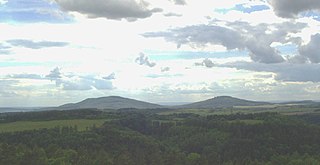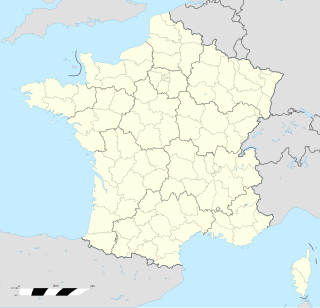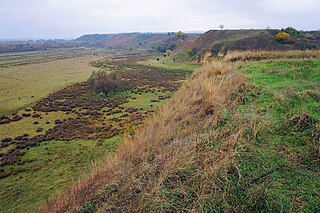 W
WAn oppidum is a large fortified Iron Age settlement. Oppida are associated with the Celtic late La Tène culture, emerging during the 2nd and 1st centuries BC, spread across Europe, stretching from Britain and Iberia in the west to the edge of the Hungarian plain in the east. They continued to be used until the Romans conquered Southern and Western Europe. In regions north of the rivers Danube and Rhine, such as most of Germania, where the populations remained independent from Rome, oppida continued to be used into the 1st century AD.
 W
WAlcimoennis is the name widely attached to a Celtic Oppidum, or hill fort above the modern town of Kelheim in Bavaria, Germany. The name comes from Ptolemy, who in his Geography, only mentioned the name and described the location of the settlement. There is some controversy over the identification of the Kelheim remains with Alcimoennis, but it is still widely accepted.
 W
WAlesia was the capital of the Mandubii, one of the Gallic tribes allied with the Aedui. The Celtic oppidum was conquered by Julius Caesar during the Gallic Wars and afterwards became a Gallo-Roman town. Modern understanding of its location was controversial for a long time; however, it is now thought to have been located on Mont-Auxois, near Alise-Sainte-Reine in Burgundy, France.
 W
WThe Roman city of Argentomagus was located in the Mersans plateau of central France, at the strategic point on the north bank of the River Creuse, where a Roman bridge once traversed. It was located at the crossing of two roads—Cenabum (Orléans) to Augustoritum (Limoges), and Limonum (Poitiers) to Avaricum (Bourges). The Latin name of the city meant "Silver Market." The modern town of Argenton takes its name from the ancient site of Argentomagus.
 W
WBasel-Münsterhügel is the site of an Iron Age fort or oppidum, known as Basel oppidum, constructed by the Gaulish Rauraci after the battle of Bibracte in 58 BC. It the site of Basel Minster, in the Swiss city of Basel.
 W
WBibracte, a Gallic oppidum or fortified settlement, was the capital of the Aedui and one of the most important hillforts in Gaul. It was situated near modern Autun in Burgundy, France. The material culture of the Aedui corresponded to the Late Iron Age La Tène culture.
 W
WBibrax is a Gallic oppidum. Its position has long been debated, but the oppidum is now almost certainly identified with the site of Saint-Thomas (Aisne).
 W
WThe Oppidum d'Ensérune is an ancient hill-town near the village of Nissan-lez-Ensérune, France, located between Béziers and Narbonne close to the D609 and Canal du Midi. It has been listed since 1935 as a monument historique by the French Ministry of Culture.
 W
WEntremont is a 3.5 hectare archaeological site three kilometres from Aix-en-Provence at the extreme south of the Puyricard plateau. In antiquity, the oppidum at Entremont was the capital of the Celtic-Ligurian confederation of Salyes. It was settled between 180 and 170 B.C., somewhat later than the inhabitation of other oppida, such as Saint-Blaise. The site was abandoned when it was taken by the Romans in 123 B.C. and replaced by Aquae Sextiae, a new Roman city founded at the foot of the plateau. By 90 B.C., the former oppidum was completely uninhabited.
 W
WThe Glauberg is a Celtic oppidum in Hesse, Germany consisting of a fortified settlement and several burial mounds, "a princely seat of the late Hallstatt and early La Tène periods." Archaeological discoveries in the 1990s place the site among the most important early Celtic centres in Europe. It provides unprecedented evidence on Celtic burial, sculpture and monumental architecture.
 W
WHeidengraben is the name given to the remains of a large Celtic fortified settlement (oppidum) dating to the Iron Age, located on the plateau of the Swabian Jura in the districts of Reutlingen and Esslingen in Baden-Württemberg, Germany. The settlement was in use from about the late 2nd century BC to the early 1st century BC. By surface area, Heidengraben is the largest oppidum in all of mainland Europe.
 W
WThe Heuneburg is a prehistoric hillfort by the river Danube in Hundersingen near Herbertingen, between Ulm and Sigmaringen, Baden-Württemberg, in the south of Germany, close to the modern borders with Switzerland and Austria. It is considered to be one of the most important early Celtic centres in Central Europe. Apart from the fortified citadel, there are extensive remains of settlements and burial areas spanning several centuries.
 W
WThe Oppidum of Manching was a large Celtic proto-urban or city-like settlement at modern-day Manching, near Ingolstadt, in Bavaria, Germany. The settlement was founded in the 3rd century BC and existed until c. 50-30 BC. It reached its largest extent during the late La Tène period, when it had a size of 380 hectares. At that time, 5,000 to 10,000 people lived within its 7.2 km walls. Thus, the Manching oppidum was one of the largest settlements north of the Alps. The ancient name of the site is unknown, but it is assumed that it was the central site of the Celtic Vindelici tribe.
 W
WThe Milseburg is an extinct volcano and at 835 metres (2,740 ft) above sea level the second highest elevation in the Hessian part of the Rhön Mountains, Germany. The hill is located east of Fulda, near the villages of Kleinsassen and Danzwiesen. It is a popular destination for hikers and bikers. Scientifically, Milseburg is most notable for the remains of a large Celtic oppidum. It also features several other structures on the peak, including a chapel dedicated to St Gangulphus.
 W
WMurus gallicus or Gallic wall is a method of construction of defensive walls used to protect Iron Age hillforts and oppida of the La Tene period in Western Europe.
 W
WNesactium was an ancient fortified town and hill fort of the Histri tribe. Its ruins are located in southern Istria, Croatia, between the villages of Muntić and Valtura.
 W
WThe Oppidum de Verduron is an oppidum in the 15th arrondissement of Marseille, France. It was built in the Iron Age. It was discovered in 1906, and fully excavated in 1911. It has been listed as an official historical monument since August 24, 2004.
 W
WSteinsburg is the colloquial name for the remains of a Celtic oppidum on the Kleiner Gleichberg in the German state of South Thuringia. It is located within the county of Hildburghausen by Waldhaus near the small town of Römhild.
 W
WOppidum Uetliberg was a La Tène era oppidum located near the top of the hill Uetliberg in what is now the Swiss canton of Zurich.
 W
WPfostenschlitzmauer is the name for defensive walls protecting Iron Age hill forts and oppida in Central Europe, especially in Bavaria and the Czech Republic. They are characterized by vertical wooden posts set into the front stone facing. The rampart is constructed from a timber lattice filled with earth or rubble. The transverse cross-beams may also protrude through the stone facing, as with the "murus gallicus" used in Gaul and western Germany.
 W
WSegeda is an ancient settlement, between today's Belmonte de Gracián and Mara in the province of Zaragoza, Aragon, Spain. Originally it was a Celtiberian town, whose inhabitants, the Belli, gave it the name Sekeida or Sekeiza.
 W
WTitelberg is the site of a large Celtic settlement or oppidum in the extreme south west of Luxembourg. In the 1st century BC, this thriving community was probably the capital of the Treveri people. The site thus provides telling evidence of urban civilization in what is now Luxembourg long before the Roman conquest.
 W
WVertillum is a Gallo-Roman site in the modern commune of Vertault in the Côte-d'Or department of eastern France. It has been extensively excavated over the past century. Many of the objects found at the site are held in the nearby Musée du Pays Châtillonnais.
 W
WŽidovar is an archeological site and settlement near Vršac, Serbia.
 W
WLindenhof is the present name of the probably Helvetii oppidum on the Lindenhof hill on the western shore of the Limmat in Zürich.